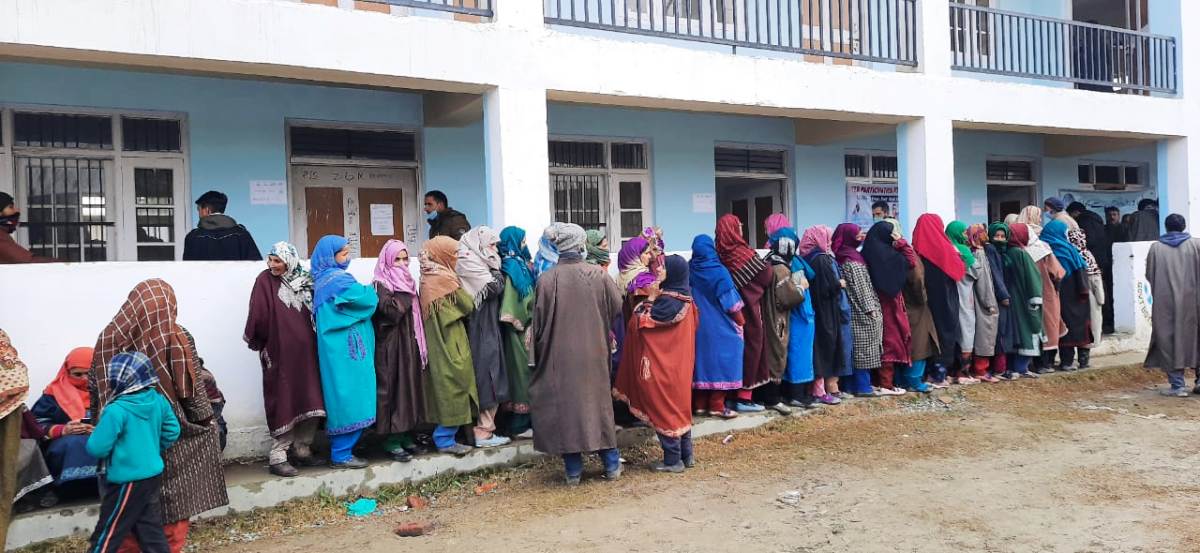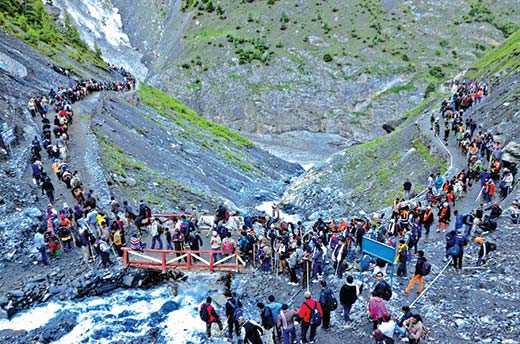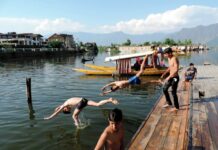SRINAGAR: The increasing carbon emissions have accelerated glacier melting in Jammu & Kashmir, with experts warning that the Union Territory has lost nearly 30 percent of its glaciers over the past 60 years. They further caution that if the current pace continues, up to 70 percent of these glaciers could disappear by the end of this century.
Reports indicate that glacier melting will inevitably lead to water scarcity in the near future. However, the experts assert that the only solution to preserve these glaciers is to become carbon neutral.
“There are 18,000 glaciers in Jammu, Kashmir, and Ladakh, all of which are steadily melting. Glacier melting is a widespread issue throughout the Himalayas, including J&K. Over the past few years, the pace of glacier melting has increased, with last year witnessing record levels of melting. This year’s melting, while somewhat lower than the previous year, is still a cause for concern,” said Professor Shakil Romshoo, an earth scientist and Vice Chancellor of the Islamic University of Science and Technology (IUST).
Professor Romshoo attributes the record glacier melting to reduced winter snowfall, especially during the warm months of February and March. “The melting of snowfall has intensified due to the consistently high temperatures in February and March, with heatwaves beginning in April,” he stated.
Estimating the exact loss of glaciers is challenging, but according to research, J&K has already lost 25-30 percent of its glaciers in the last 60 years. If melting continues at the current rate, it is projected that 70 percent of the glaciers will vanish by the end of this century. Professor Romshoo also noted that approximately 18-20 meters of glacier ice is lost annually.
Another expert, Dr Irfan Rashid, an Assistant Professor at the Department of Earth Sciences at the University of Kashmir, highlighted that research indicates a 25 percent reduction in the size of Kashmir’s largest glacier, the Kolahoi glacier, since the 1960s. “From 1962 to 2022, it has receded by approximately 25 percent and is losing about 35 meters of ice annually. Kolahoi glacier is not only the largest glacier in Kashmir but also the fastest-melting one,” he revealed.
Dr Irfan pointed out that other glaciers in J&K and Ladakh are experiencing similar melting trends, with research predicting a temperature increase of 4-7 degrees by the end of this century. Consequently, it appears that glacier melting cannot be halted.
“Unless we achieve carbon neutrality, there is no way to halt glacier melting. Carbon emissions are on the rise, and global emissions are expected to increase according to studies. The only effective measure to prevent glacier loss is to become carbon neutral,” he emphasised. (KNO)















